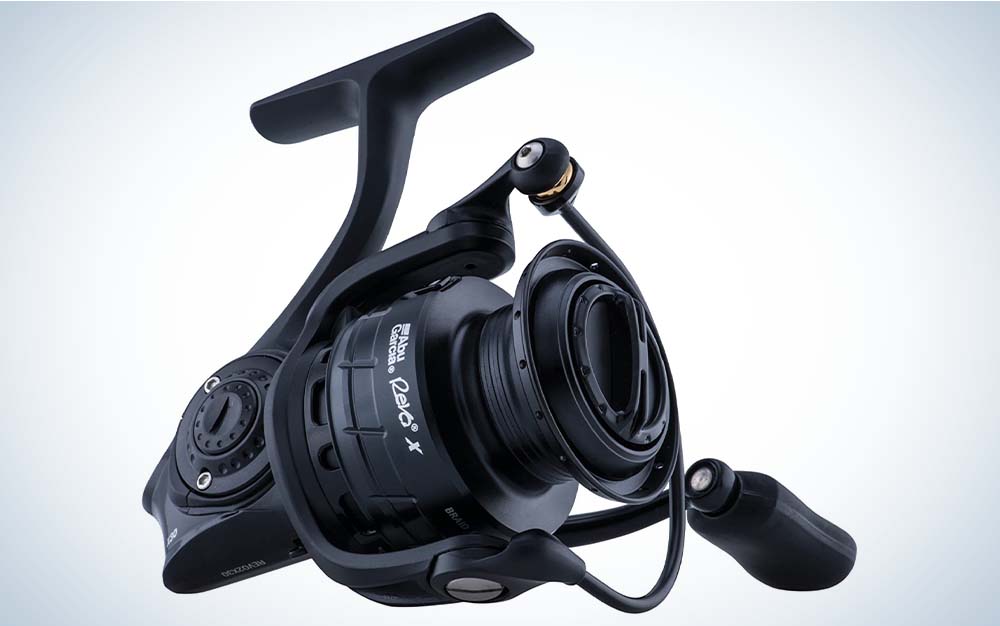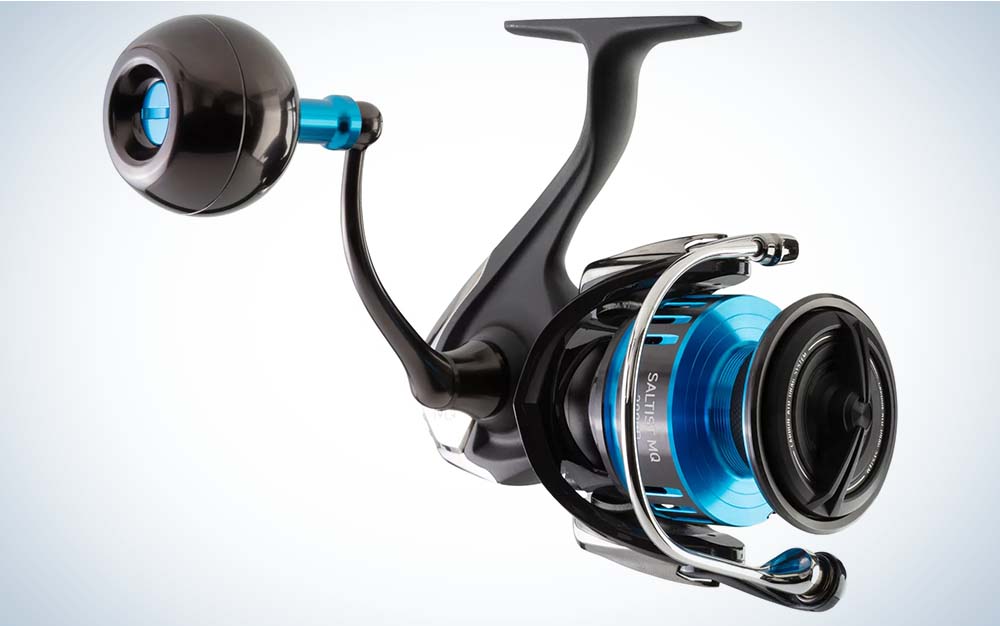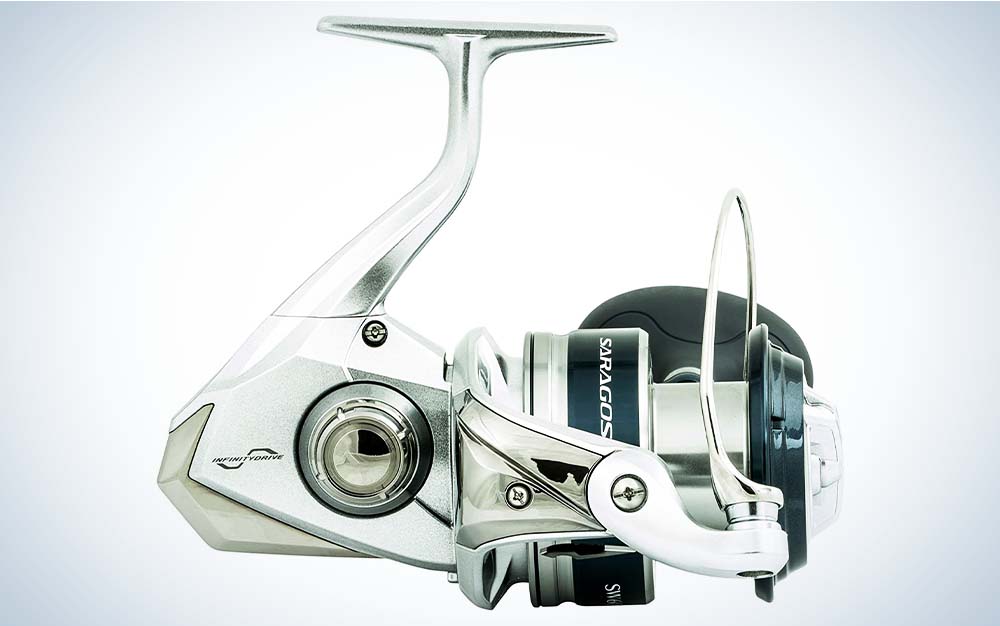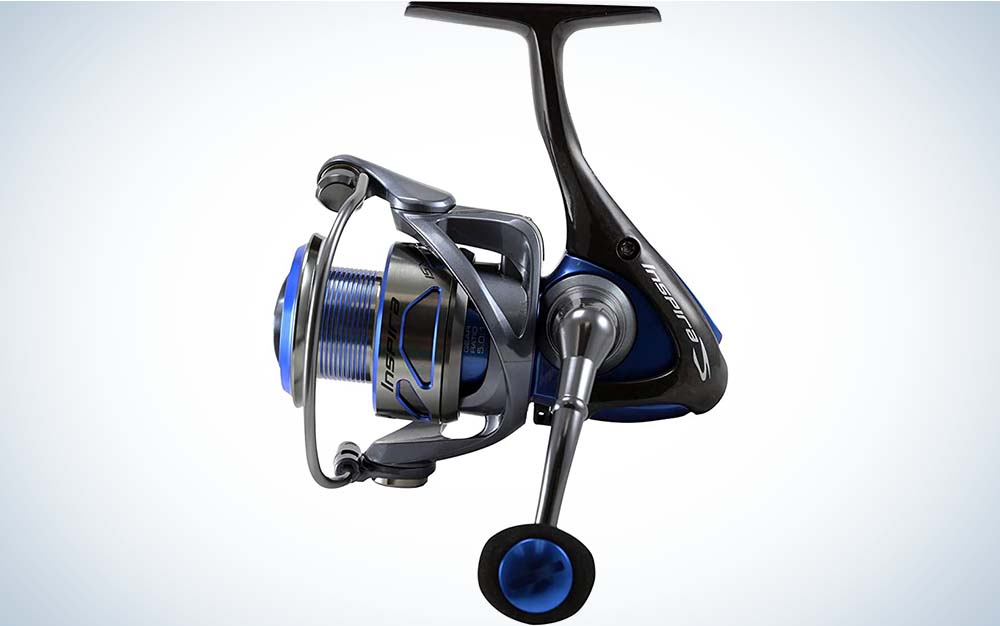We may earn revenue from the products available on this page and participate in affiliate programs. Learn More ›
Updated Jun 30, 2023 10:56 AM
After spending most of my life fishing salty backwaters, I’ve finally found a few inshore spinning reels that stand up to the challenge of salt, sand, and the biggest fish. Spinning reels are simple to use, and they’re optimal for fishing light lures, making long casts, and even finessing a bait. And while this design makes them an excellent option for saltwater, it also exposes the spool, arm, and shaft to the elements, which can speed up the corrosion process. Twenty years ago, I wouldn’t expect a spinning reel to last more than a couple seasons. But over the past few years, the best inshore spinning reels have sturdy construction and advanced materials for years of reliable fishing.
How I Chose the Best Inshore Reels
To test the best inshore spinning reels, I took them fishing in the salt and sand and let the fish do the testing. After hours of casting, retrieving, and fighting fish, these reels performed flawlessly trip after trip. Following each fishing session, I rinsed the reels and dried them off, without much other maintenance. In the end, these beautifully handled the saltwater conditions with sturdy construction and powerful retrieve.
Read Next: Best Saltwater Baitcasting Reels
Best Inshore Spinning Reels: Reviews and Recommendations
Best Overall: PENN Clash II 2500
Key Features
- Weight: 8.3 ounces
- Monofilament line capacity: 175 yards of 8-pound test
- Max drag: 12 pounds
Pros
- Stainless steel ball bearings
- Full metal body and sideplate
- Compact size
Cons
- Some might prefer a larger size
For almost a century, PENN has been making saltwater fishing gear, and the Clash II is their top-of-the-line inshore spinning reel. Available in sizes from 1000 to 5000, the Clash line is designed to target speckled trout, redfish, school stripers, and bay bass with light lures and small baits. As PENN’s best inshore spinning reel, the Clash II is small but mighty, packed with a carbon fiber drag, precision cut brass gears, and a strong and stiff aluminum body. Corrosion resistant components and stainless steel ball bearings keep the reel turning smoothly. And to balance the reel’s strength, PENN made the Clash II compact and light for those grueling battles with large saltwater predators. Read more about the Pen Clash II in this review.
Best Lightweight: Abu Revo X 2X20
Key Features
- Weight: 7.75 ounces
- Monofilament line capacity: 130 yards of 8-pound test
- Max drag: 11 pounds
Pros
- Stainless steel main shaft
- Corrosion resistant ball bearings
- Graphite rotor
Cons
When I’m finesse fishing with a small lure and thin line, I grab the compact and light Abu Revo X 2X20 spinning reel. To dangle a ⅛ ounce jig or weedless swimbait in front of finicky speckled trout, striped bass, or flounder, I like a small reel that’s comfortable to fish all day. The Revo X has a carbon body and rotor to reduce the reel’s weight while maintaining sensitivity and power. The machined aluminum spool and sturdy bail work to manage light fishing line without creating wind knots and tangles. Even though the reel is small, the handle and knob are oversized for more power and control. Combined with a light-action, extra-fast rod, the Revo X improves the sensitivity and response you need to fish a light lure.
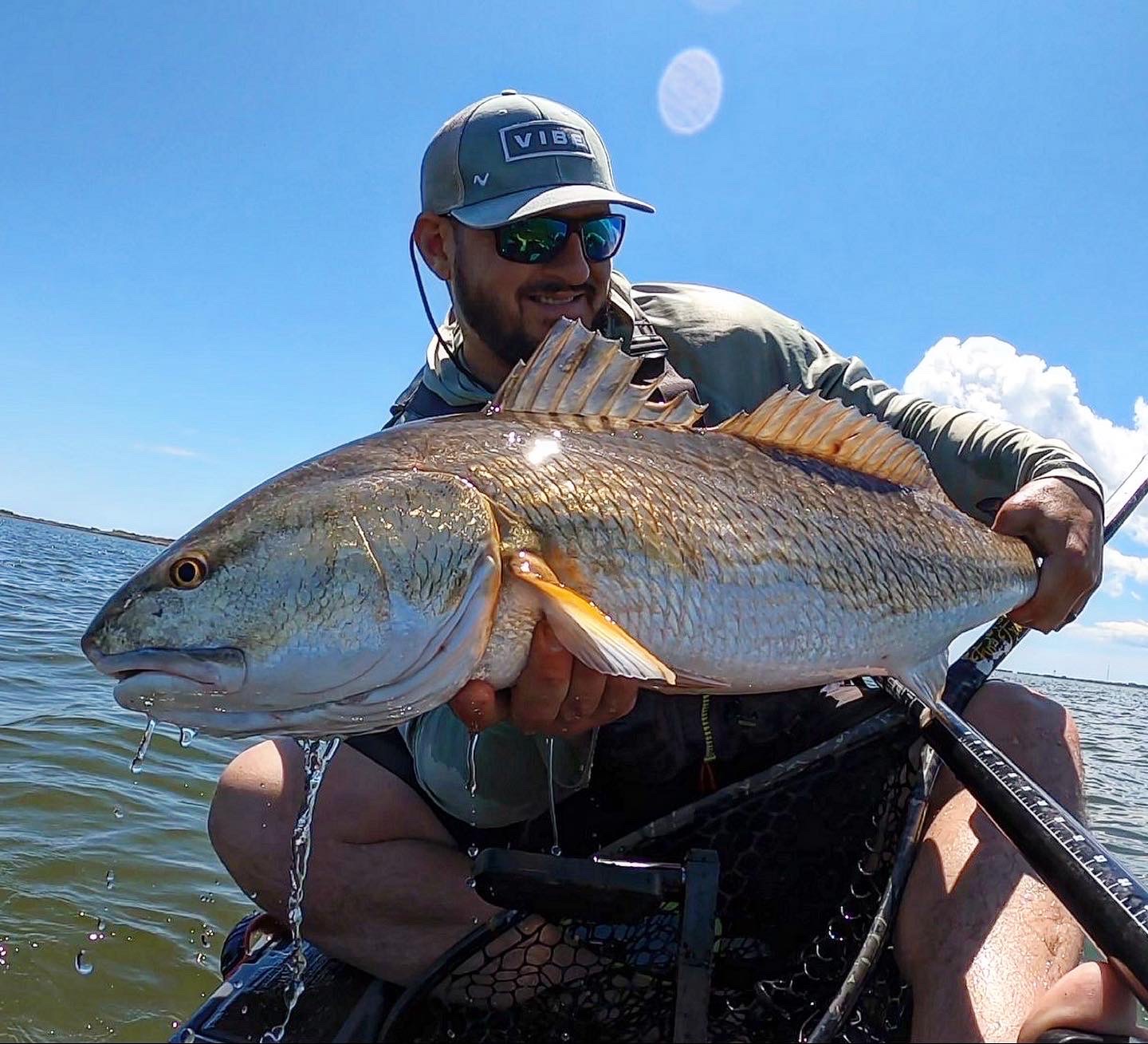
Best Midsize: Daiwa Saltist MQ4000
Key Features
- Weight: 10.2 ounces
- Monofilament line capacity: 360 yards of 14-pound test
- Drag pressure: 26.4 pounds
Pros
- Tubular stainless steel bail
- Metal frame and side plates
- New frame design allows larger gears
Cons
Daiwa has always worked outside the box to develop solutions to common spinning reel problems. And the Saltist spinning reels perfectly exemplify this. Starting with a full metal frame and side plates for maximum power, the latest version, Saltist MQ, uses a redesigned body to fit even larger precision-cut gears inside. The reel reduces rotating weight with a hollow stainless steel bail and ultralight rotor. Bigger gears allow for more cranking power and less stress on moving parts.
My favorite feature is the Magsealed oil in the bearings. This both lubricates the bearings and prevents water or dirt from entering the system. Daiwa’s Saltist MQ is the best medium-size inshore spinning reel for throwing larger plugs and swimbaits to striped bass, redfish, and snook. And this reel punches above its weight with an impressive 26.4 pounds of carbon-fiber drag pressure in a 4000-series reel. That means I can use a smaller lure and cast farther while still having the power to fight a big fish.
Best Large: Shimano Saragosa SW A 6000
Key Features
- Weight: 16 ounces
- Monofilament line capacity: 265 yards of 12-pound test
- Max drag: 22 pounds
Pros
- Powerful drag
- Water-resistant body
- Precision gear alignment
Cons
To target large striped bass, bull red drum, cobia, and tarpon, I grab my Saragosa SW A 6000 spinning reel. The Saragosa comes in sizes from 5000 to a monster 250000, but I chose the respectable 6000 for large lures and big inshore fish. The 6000 size holds 295 yards of 30 pound monofilament, so there’s plenty of line to let a big fish run. Then, 22 pounds of drag works the monster back to the boat. To keep the reel together under incredible strain, the gears and shafts are supported with shielded bearings. Shimano’s flagship Stella spinning reels are the top choice for big-game anglers tackling tuna and giant trevally. Many of the features on the Stella have trickled down to the Saragosa at an affordable price. I don’t get a shot at a big fish every day, so I appreciate that the Saragosa’s reliable sealed body and corrosion-resistant components are ready when I need them.
Best Value: Okuma Inspira 2500
Key Features
- Weight: 7.5 ounces
- Monofilament line capacity: 160 yards of 8-pound test
- Drag pressure: 13 pounds
Pros
- Low price
- 8+1 stainless steel ball bearings
- Light carbon body
Cons
To compete with the big boys at a reasonable price, Okuma gave the Inspira spinning reel their most advanced features in a simple design. A spinning reel hangs below the rod exposing it to twisting and bending under heavy drag pressure. Okuma counters the pull with a one-piece frame and stem that improves torque and keeps gears and pinions aligned. This makes the small reel powerful and improves durability while reducing its weight. The most interesting design feature is the open rotor for improved airflow to easily clean and dry the reel. Even though the Inspira is the least expensive reel in this review, it houses some of the most unique features for a reel. And it’s a blast to use.
Things to Consider Before Buying an Inshore Spinning Reel
Thanks to the elements, inshore anglers need the highest performance out of a saltwater spinning reel. To meet these expectations, spinning reels have beefier construction and corrosion-resistant components than freshwater reels. Before investing in a spinning reel for inshore fishing, take into consideration these saltwater-specific qualities.
Design
A saltwater spinning reel is designed to withstand the corrosive salt and sand and still beat the biggest fish. They’re often heavier than freshwater reels and have a stronger drag, larger spool, and more cranking power to handle large saltwater fish.
To survive the rough and tumble world or saltwater fishing, the best fishing reels typically have a stiff frame and heavy-duty components, like high quality stainless steel, brass, and aluminum parts. However, the bail and line-guide are a spinning reel’s Achilles heel. And the best ones should have a sturdy bail wire and corrosion-resistant line roller to avoid damage and failure.
To stop a speeding predator, a reel’s drag must work flawlessly. Drag systems with carbon fiber washers dissipate heat to keep it running smoothly and predictably, even in wet and grimy conditions. And once you do slow down a large fish, a beefier handle with a larger grip and stainless steel ball bearings will make your life much easier when it’s time to reel it in.
But let’s say that fish is a bit bigger than you expected, the anti-reverse clutch will help keep the spindle from turning backwards. After repeated abuse from long and hard pulls of the drag, the clutch will give out. But if you invest in a solid reel, you’ll get a lot more mileage out of it than you would a cheaper option.
Anti-Corrosion
Saltwater is the enemy of all mechanical things. Add sand, dust, and fish slime, and you spell the end of precision moving parts. So you’ll want a spinning reel that has corrosion-resistant materials (specifically the ball bearings) and waterproof construction, like a fully sealed drag system.
Look for a saltwater reel that’s easy to clean and maintain. Rinsing the reel with freshwater after each trip should wash away most of the salt and slime. And some of my favorite spinning reels have access ports and components that are easy to inspect and maintain.
FAQs
Q: What size spinning reel for inshore fishing?
With the wide variety of inshore fish, it’s important to know what size spinning reel you will need. Inshore anglers target everything from panfish to tarpon, so they need a rod and reel to match. I carry three rod and reel combos when I’m inshore fishing. The first is a light tackle 2500 reel and matching medium-light rod to fish jigs, twitch baits, and weightless live baits. Then, I rig up a heavier 4000-size reel and medium rod for lures up to an ounce and bottom rigs up to 2 ounces. The heavier rod and reel works great for a popping cork. And I’m always ready to meet a big cobia, striped bass, red drum, or tarpon with a 6000-class reel and heavy-action rod. When I’m targeting big fish, I can use a bait rig and 6-ounce sinker, 3-ounce jig or larger live bait. With these three rods, inshore anglers can cover a lot of water and target almost everything that swims.
Q: How do you set up an inshore spinning reel?
Rod and reel sizes vary from manufacturer to manufacture, so it’s difficult to know how to set up an inshore spinning reel. A medium-heavy rod from one company may be heavier than the same class rod from another company. The same inconsistency holds with reels. A 5000-class reel from different manufacturers will differ in weight and size. When I’m putting together a new spinning combo, I match the reel to the rod for weight and balance. I should be able to balance the rod by placing my finger just ahead of the reel, and this is a good way to know if you’ve paired them closely. I like to use the lightest line rated on the rod. Lighter line is more sensitive, casts farther, and sinks faster. Most of my spinning reels are spooled with braided line. And the best inshore spinning reels have a stiffer frame and durable line guide to handle the power and heat of braided line.
Q: How much does an inshore spinning reel cost?
If you’re wondering how much an inshore spinning reel costs, well, the sky’s the limit. Inshore spinning reels can cost over $500, but you can get away with a solid option for much less than that. The spinning reels in this review cost between $75 and $325. Of course, the most expensive reel is also the largest, strongest, and most powerful reel and has advanced corrosion-fighting components. Surprisingly, the least expensive reel has many of the same characteristics in a smaller package.
Inshore anglers are lucky: many of the most recent advancements in reel technology are now available in less expensive models. Still, anglers who spend a lot of time on the water chasing a wide variety of fish, will probably spend near the upper end of this price range.
Final Thoughts
With so many great options at several different budget points, anglers should have no problem finding the best inshore spinning reels for their specific needs. Once you narrow down what and where you’ll be targeting the fish, it’s just a matter of choosing one and pairing it with one of the best saltwater fishing rods.

